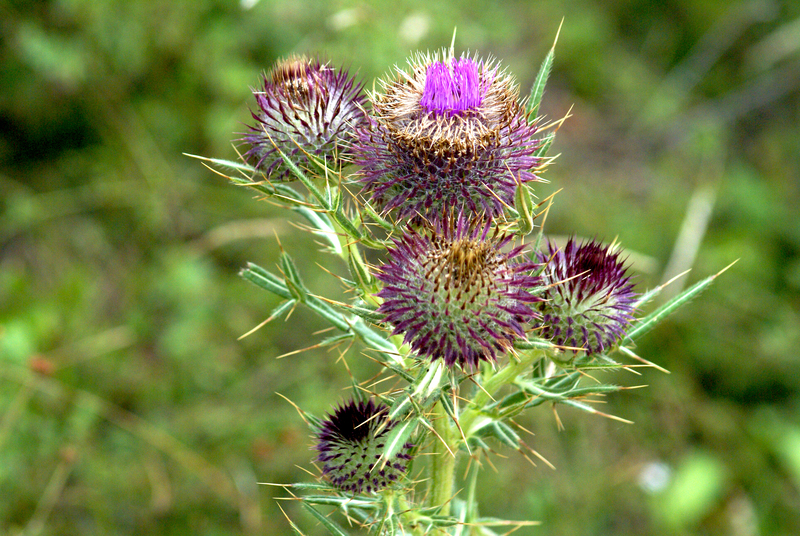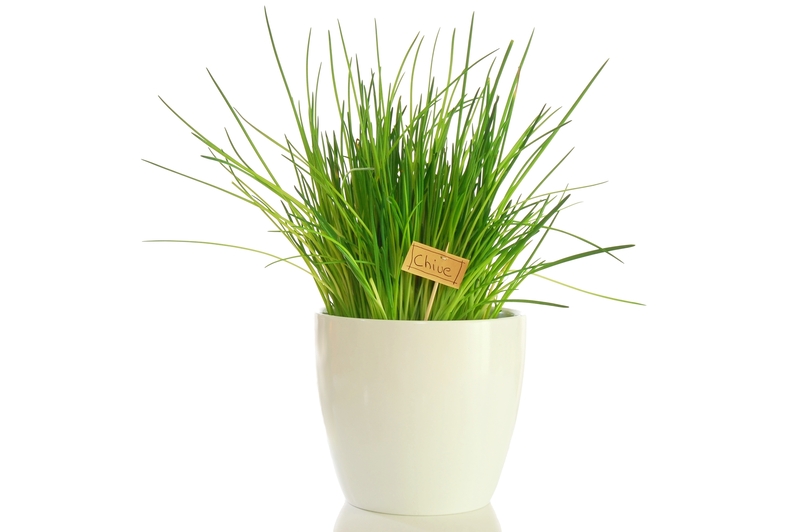Effortless Gardening on the Go - 3 Tips for Moveable Plant Success
Modern lifestyles demand flexibility and adaptability, even when it comes to enjoying greenery and nurturing nature's beauty. If you move frequently, live in a rental, or love rearranging your living spaces, you might think that gardening isn't for you. But that's not true! Enter the world of moveable gardening, where convenience and plant passion combine. In this comprehensive guide, we'll explore three essential tips to master effortless gardening on the go--making it simple for everyone to nurture lush, thriving plants anywhere.
Why Choose Moveable Gardening?
Mobile or moveable plant gardening is about versatility: imagine shifting your mini herb garden to catch more sunlight or rearranging potted blooms to freshen up your living room. This gardening style suits nomads, apartment dwellers, students, and anyone craving greenery without the permanence of backyard beds. But the benefits go even further:
- Flexibility: Move your plants when redecorating or relocating.
- Space Maximization: Perfect for small spaces or balconies.
- Climate Control: Shift plants indoors during cold snaps or out to catch rain and sun.
- Pest Management: Isolate ill plants and prevent pest infestations instantly.
- Accessibility: Make gardening easy for people with mobility issues.
Let's dive deeper into the secrets of effortless gardening on the go with three practical, expert-approved tips for moveable plant success.

1. Choose the Right Containers for Mobility & Plant Health
The Foundation of Portable Gardening
The key to moveable gardening starts with the containers you select. Unlike traditional in-ground beds, your pots and planters are mobile--so they must be both functional and stylish.
- Lightweight Materials Matter: Opt for pots made from materials like plastic, fiberglass, resin, or fabric grow bags, which are much easier to lift and move than ceramic or clay. These materials also prevent root overheating in the sun compared to metals.
- Container Size and Shape: Choose containers that balance stability and portability. Tall, narrow pots are more likely to tip, while very large containers can become heavy with soil and water. Most herbs, succulents, annual flowers, and even compact vegetables (think cherry tomatoes or salad greens) thrive in pots ranging from 15 to 60 litres.
- Drainage Is Non-Negotiable: Healthy roots require good aeration. Make sure your pots have adequate drainage holes to prevent root rot and overwatering.
- Handles & Rolling Options: Some planters come with built-in handles, wheels, or casters. Bicycle baskets, wheeled carts, or plant caddies also make excellent mobile bases for your plants. These features help you maneuver even heavier pots with minimal effort.
- Pick Decorative But Durable: If your containers double as interior decor, ensure they're UV-resistant and weatherproof for outdoor exposure. Indoor/outdoor versatility increases usability.
Pro Tip: When using large pots, fill the bottom third with lightweight materials such as empty plastic bottles or packing peanuts (inside a mesh bag). This trick improves drainage and reduces overall weight, enhancing portability.
2. Select Moveable-Friendly Plants
Greenery That Thrives on the Move
Not all plants are equally suited for mobile gardening. Success starts with choosing species that adapt well to container life, changing environments, and the occasional move. Here's what to look for:
- Compact Growth Habits: Dwarf varieties, bushy herbs, small vegetables, or houseplants with shallow roots are naturally better suited for pots and moving.
- Resilient and Adaptable: Plants like succulents, snake plants, ZZ plants, pothos, spider plants, lavender, rosemary, mint, and cherry tomatoes tolerate changes in light, humidity, and temperature much better than larger, finicky species.
- Slow-growing Specimens: Faster growth often means quicker root binding, but slow-growers can live happily in containers for years.
- Loving Both Indoors and Outdoors: If you like to shift your plants between inside and outside, select those that thrive in a broad range of light and humidity, such as ferns, jade plants, or herbs like basil and oregano.
Top Moveable Plant Picks
- Herbs: Basil, thyme, chives, mint, parsley, oregano
- Edibles: Lettuce, radishes, cherry tomatoes, strawberries, baby carrots
- Flowers: Marigolds, nasturtiums, pansies, petunias, begonias
- Indoor Plants: Snake plant, pothos, peace lily, jade, succulents
Before moving plants, check for specific needs. For instance, tropical houseplants may not like cold drafts or direct midday sun, while succulents crave bright light and minimal water.
Tip: Group plants with similar needs in individual containers to create attractive, easy-to-move clusters, ensuring all plants get proper care without extra effort.
3. Master the Art of Easy Plant Relocation
Stress-Free Moves for Thriving Plants
Whether you're shifting your plant collection to a new spot for better light or preparing for a whole-house move, minimizing stress is essential for plant health and your convenience.
- Scout the New Spot First: Light, temperature, and humidity all change between locations. Always check conditions in advance. Use a phone app or a simple light meter to ensure your plants won't be shocked by more/less sunlight or drastic temperature swings.
- Water Wisely: Water plants a day before moving--not right before, not after. This keeps roots damp but not soggy for the journey, reducing the risk of root damage or spills.
- Protect During Transit: Wrap pots in towels or bubble wrap for longer moves, and cover foliage loosely with plastic bags or paper for added protection against wind, cold, or breakage.
- Use Plant Trolleys, Caddies, or Dollies: For heavier or larger plants, specialized furniture like plant caddies (with wheels), furniture dollies, or rolling carts makes effortless gardening on the go a reality.
- Rest, Then Adjust: Once moved, give plants time to acclimate. Don't fertilize or overwater for about a week, especially if they'll experience new light, humidity, or temperature conditions.
Advanced Relocation Tip: For temporary moves (like bringing plants inside for frost), quarantine new arrivals and check for pests before integrating them with existing collections. Clean leaves with a soft, damp cloth to remove dust and debris that may interfere with photosynthesis.
Effortless Gardening on the Go: Maintenance Secrets
Beyond selection and setup, regular, simple maintenance ensures your mobile garden thrives year-round. Here's how to keep things easy:
- Use Self-watering Pots or Water Globes: These tools reduce the frequency of manual watering, especially when moving, traveling, or during hot spells.
- The Right Potting Mix: Pick lightweight, well-draining potting mixes specifically designed for containers. Avoid using heavy garden soil.
- Routine Pruning: Clip back leggy growth and remove dead leaves to keep plants tidy and stress-free.
- Liquid or Slow-release Fertilizer: Container plants need extra nutrients--add a balanced liquid food or slow-release granules a few times a year.
- Rotate Plants: Turn pots periodically so all sides get equal sun exposure. This prevents lopsided growth and helps even coloring.
Consistency is key! By staying proactive with these techniques, you'll make effortless gardening on the go truly manageable and rewarding.
Benefits of Moveable Gardening for Modern Lifestyles
- Rental Living: Take your investment and love for plants everywhere you go without worrying about leaving behind your green friends.
- Urban Spaces: Maximize every inch--window sills, balconies, patios--by shifting plants for the best possible light and visual impact.
- Seasonal Changes: Move cold-sensitive plants indoors for winter, or arrange summer blooms to shade favorite outdoor seating areas.
- Temporary Lifestyles: Perfect for students, military families, or anyone on the move.
Effortless, moveable gardening is a sustainable, accessible, and deeply satisfying hobby--no matter your address!

Frequently Asked Questions: Effortless, Moveable Plant Success
How often should I move my portable plants?
Move plants as needed for optimal growth! Frequent rearrangement is fine--just keep transitions gradual, especially for sensitive species, so they don't get shocked by abrupt lighting or climate changes.
What's the best way to transport plants when moving houses?
Group plants by size in open boxes, secure lightweight mulch around stems to prevent soil spillage, and use towels or bubble wrap to buffer pots. Move them last, so they spend minimal time in transit and can be cared for quickly at your new place.
Can I keep the same plants indoors and outdoors?
Absolutely! Plants that thrive in a wide variety of conditions, like herbs, succulents, and many houseplants, do well transitioning between indoors and outdoors. Just monitor light, water, and pests during each move.
Final Thoughts on Effortless Gardening on the Go
Gone are the days when gardening meant staying rooted in one place. With moveable plant solutions, you can easily curate your own portable oasis--wherever life takes you! By selecting the right containers, picking portable-friendly plants, and mastering the art of smooth relocation, you'll unlock the full joy of gardening with total flexibility.
Embrace the freedom of mobile gardening--discover new possibilities for green living, enrich your well-being, and take your favorite plants along for every new adventure!
```